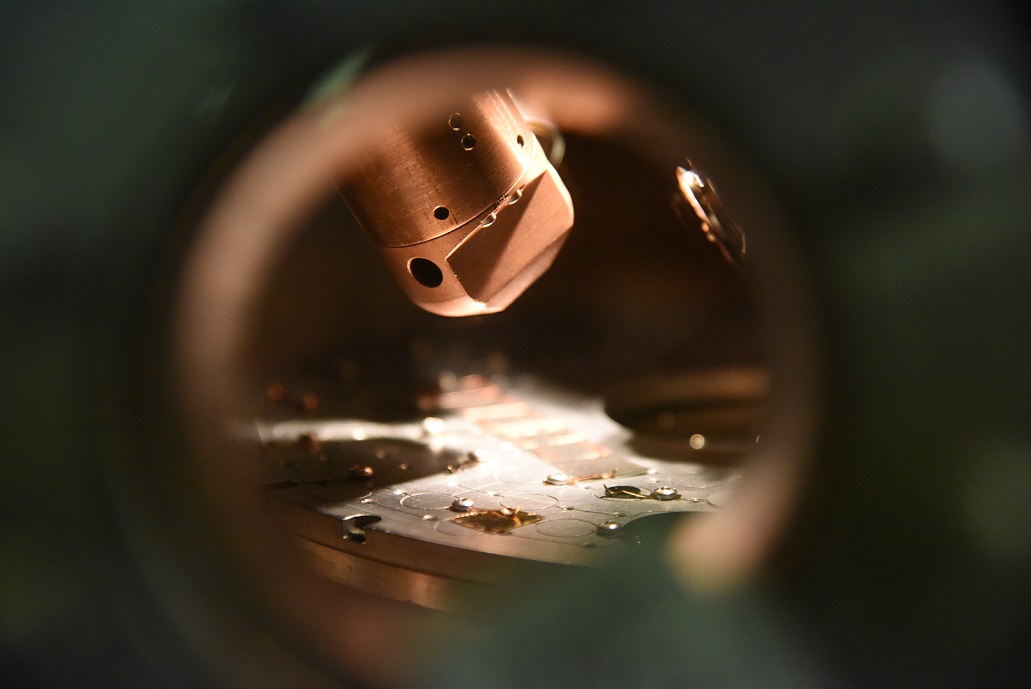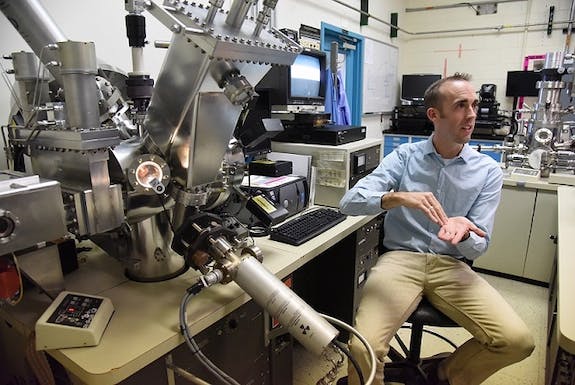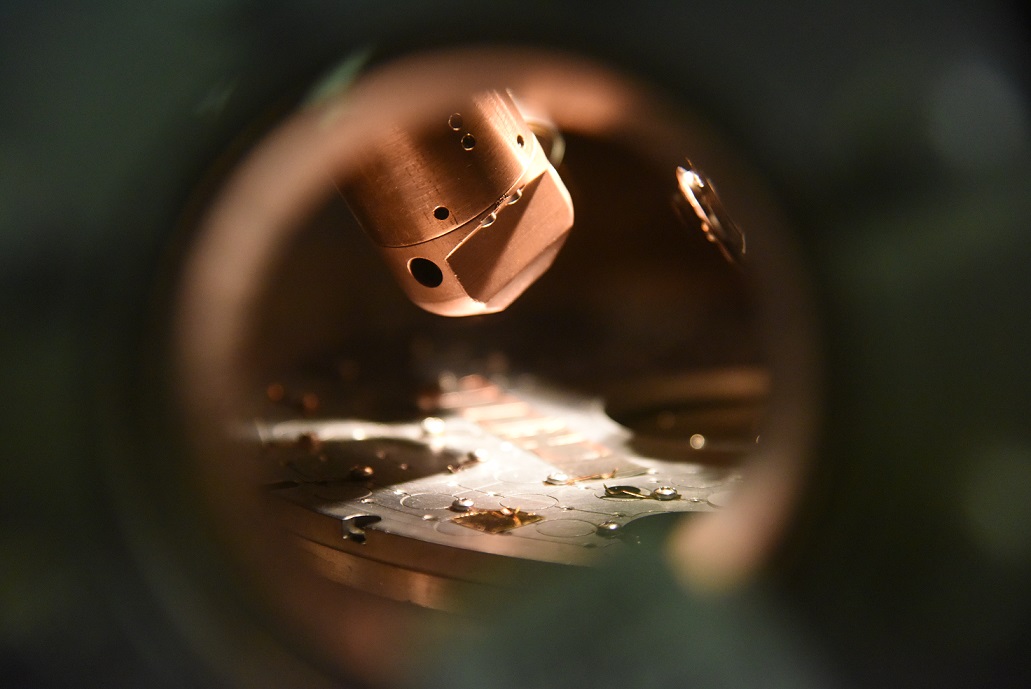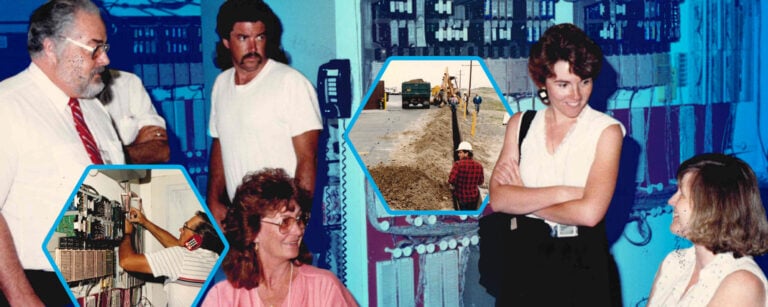The field of nuclear fusion is a worldwide effort with billions of dollars invested into developing feasible technology. Considering the behemoth amount of work being pursued across the globe focused on producing nuclear fusion, it might be easy to overlook what’s happening in a small laboratory at Idaho National Laboratory.
Still, from small things, big things may one day come. Understanding the behavior of tritium – a radioactive version of the smallest element, hydrogen – will be essential to harnessing fusion, the Holy Grail for nuclear researchers ever since scientists formed their first insights into the physics of the sun.
At INL’s Advanced Test Reactor Complex, a small team operates an experimental lab called Safety and Tritium Applied Research (STAR) to lead research into tritium safety. It is the largest INL program funded by the U.S. Department of Energy’s Office of Science, and it has the potential to offer important insights into a powerful isotope that isn’t well understood.
Stars like our sun transmute matter and turn hydrogen into helium through fusion, releasing colossal amounts of energy and producing no radioactive byproduct. While it sounds elementary enough, for more than 70 years developing an earthly fusion process that produces more energy than it consumes has proven to be a formidable challenge.

Large-scale fusion needs deuterium and tritium as fuel. Deuterium, also known as heavy hydrogen, has one proton and one neutron in its nucleus and is considered a stable isotope. Tritium, on the other hand, contains one proton and two neutrons and is a beta-emitting radioactive isotope. It is extremely mobile, and when fusion is involved, it will try to escape or embed itself anywhere it can in a reactor’s armored walls.
The INL STAR Lab dates back to 1984, the early days of research into the hydrogen-producing Next Generation Nuclear Plant (NGNP). Due to the high operating temperatures expected in NGNP, the concern was that tritium produced in the reactor would permeate through the heat exchangers to reach the hydrogen production plant, contaminating process chemicals or the hydrogen product itself.
This is a concern in fusion research as well. Since the early ‘90s, at the Tokamak Fusion Test Reactor (TFTR) in Princeton, New Jersey, and the Joint European Torus (JET) in Culham, England, scientists have gotten near the tipping point at which a fusion device releases as much energy as is required to produce it. An international team from 35 countries is constructing a $20 billion fusion reactor in France called ITER (International Thermonuclear Experimental Reactor, also Latin for “the Way”), and by 2025, they hope to have built a machine that releases 10 times as much energy as it uses.
Before that can happen, however, tritium retention in plasma facing components (PFCs) poses a challenge for managing safety. Today, the STAR facility has several tritium experiments, the largest of which is the Tritium Plasma Experiment (TPE), the only existing high-flux linear plasma device in the world fusion community that can handle both tritium and neutron irradiated materials. TPE can place a 5 percent tritium and 95 percent deuterium ITER-like plasma onto neutron-irradiated samples of tungsten, beryllium and other materials. This leads to better understanding of tritium in the fusion nuclear environment, and the development of PFCs like tungsten and molybdenum that can resist bubble and blister formation.

Recent upgrades to TPE in the past three years have included new power supplies, a new control system, and a host of new diagnostics that enhance personnel safety and make TPE a state-of-the-art linear plasma device. In addition, STAR researchers have significantly increased their materials characterization capabilities.
Dr. Chase Taylor, a principal researcher at STAR, has led the development of a surface science characterization laboratory at the STAR facility. “Once a sample has had tritium put into it, it is extremely difficult to send it to collaborators for analysis,” Taylor said. “This was our primary motivation for building up our material characterization diagnostics.”

New acquisition of a scanning Auger microscope, X-ray photoelectron spectroscopy, laser microscope, and glow discharge optical emission spectroscopy have strengthened STAR’s ability to analyze tritium-contaminated and radioactive samples. Taylor and Dr. Masashi (“Masa”) Shimada, principal investigator over STAR’s experimental work, have been attentive to any opportunity to acquire equipment that can broaden the lab’s capabilities. Often, they have been able to find equipment at INL that has fulfilled its purpose in one program and needs a new home. The X-ray photoelectron spectroscopy equipment had been sitting unused in a different INL lab where they were looking to get rid of it. “We brought it back to life and had it refurbished,” Taylor said. The “orphaned” positron annihilation spectroscopy system, which uses the annihilation between matter and small amounts of antimatter to measure internal defects in materials, came from another INL lab that was trying to free up space.
“It’s a very exciting time to work in fusion. With TPE and our new capabilities, we’re ready to take our research to a new level,” Taylor said. “I hear people say, ‘I didn’t know you exist’ and ‘I had no idea.’ Although our primary research area is fusion, we are glad we now have tools that can help other research groups. If we can contribute to meaningful science, of course we want to help.”






